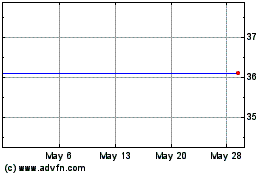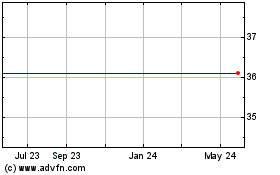Straddling Earnings Season - Know Your Options
July 06 2011 - 8:00PM
Zacks
With earnings season just around the corner, here's an options
strategy that's perfect for a company about to report.
A straddle involves buying both a call and a put at the same
strike price (at-the-money) at the same time.
With options, you buy a call if you expect the market to go up.
And you buy a put if you expect the market to go down. A straddle,
however, is a strategy to use when you're not sure which way the
market will go, but you believe something big will happen in either
direction.
For example, let's say you expect a big move to occur, either up
or down, based on whether the company reports a positive surprise
or a negative surprise. With these strategies, you can make money
in either direction without having to worry about whether you
guessed correctly or not.
For example: let's say a stock was trading at $100 a few days
before their earnings announcement. So you decide to put on a
straddle by buying:
- the $100 strike call
- and the $100 strike put
Because you only plan on being in the trade for a few days (to
maybe a few weeks), you decide to get into the soon-to-expire
options.
Note: usually, I'll advocate buying more time and getting
in-the-money options. And I still do -- when playing one side of
the market.
But when playing both sides of the market simultaneously for an
event you expect to take place in the near immediacy, the opposite
is best. Why? Because at expiration your profit is the difference
between how much your options are in-the-money minus what you paid
for them. So if you don't need a lot of time, this keeps the cost
down and your profit potential up.
If you paid $150 for an at-the-money call option that will
expire shortly and another $150 for an at-the-money put option that
will expire shortly, your cost to put on the trade was $300 (not
including transactions costs). If that stock shot up $10 as a
result of a positive earnings surprise, that call option that you
paid $150 for would now be worth $1,000. And that put option would
be worth zero ($0).
So let's do the math: if the call, which is now $10
in-the-money, is worth $1,000; then subtract the $150 you paid, and
that gives you an $850 profit on the call.
The put, on the other hand, is out-of-the-money, and is worth
nothing, which means you lost $150 on the put.
Add it all together, and on a $300 investment, you just made a
profit of $700. Pretty good—especially for not even knowing which
way the stock would even go.
However, if you paid more for each side of the trade, those
would be extra costs to overcome. But by keeping each side's cost
as small as reasonably possible, that leaves more profit potential
on the winning side and a smaller loss on the losing side.
Moreover, if the stock stays flat (in other words, the big move
you expect doesn't materialize, thus resulting in both sides of the
trade expiring worthless), your cost of the trade was kept to a
minimum.
So buying a straddle by its very nature should be looked at as a
short-term trade. If the outcome of the event that prompted you to
get into the straddle in the first place now has you strongly
believing that a continuation of the upmove or downmove is in
order, you could then exit the straddle and move into the one-sided
call or put and apply the in-the-money and more-time rules for
those.
Here are 5 optionable stocks due to report earnings next week
(with a high beta for an extra boost) that could see some volatile
price action, one way or the other:
CPX Complete Production Services
CNS Cohen & Steers
CE Celanese
SCSS Select Comfort
BIDU Baidu
You can learn more about different types of option strategies by
downloading our free options booklet: 3 Smart Ways to Make Money
with Options (Two of Which You Probably Never Heard About). Just
click here.
And be sure to check out our new Zacks Options Trader.
Disclosure: Officers, directors and/or employees of Zacks
Investment Research may own or have sold short securities and/or
hold long and/or short positions in options that are mentioned in
this material. An affiliated investment advisory firm may own or
have sold short securities and/or hold long and/or short positions
in options that are mentioned in this material.
BAIDU INC (BIDU): Free Stock Analysis Report
CELANESE CP-A (CE): Free Stock Analysis Report
COHEN&STRS INC (CNS): Free Stock Analysis Report
COMPLETE PRODUC (CPX): Free Stock Analysis Report
SELECT COMFORT (SCSS): Free Stock Analysis Report
Zacks Investment Research
Complete Production Services Complete Production Services Common Stock (NYSE:CPX)
Historical Stock Chart
From Oct 2024 to Nov 2024

Complete Production Services Complete Production Services Common Stock (NYSE:CPX)
Historical Stock Chart
From Nov 2023 to Nov 2024
